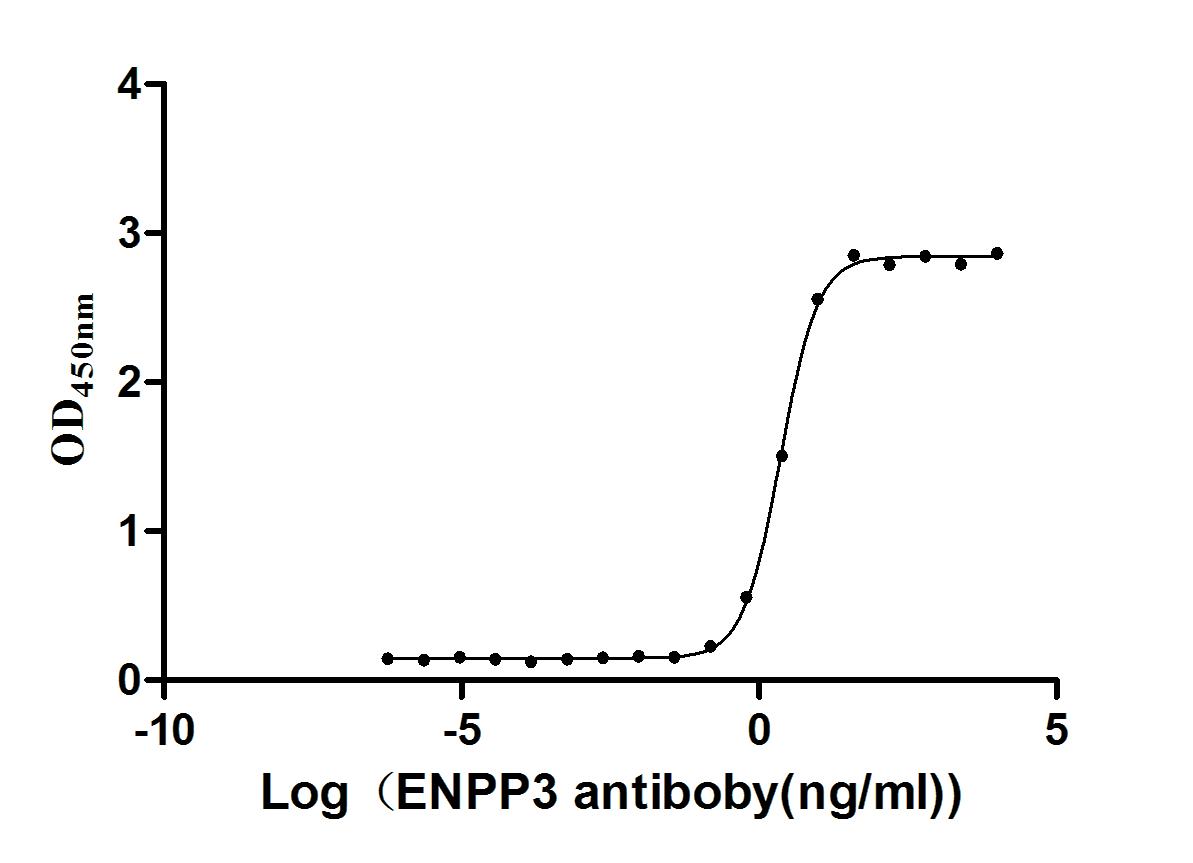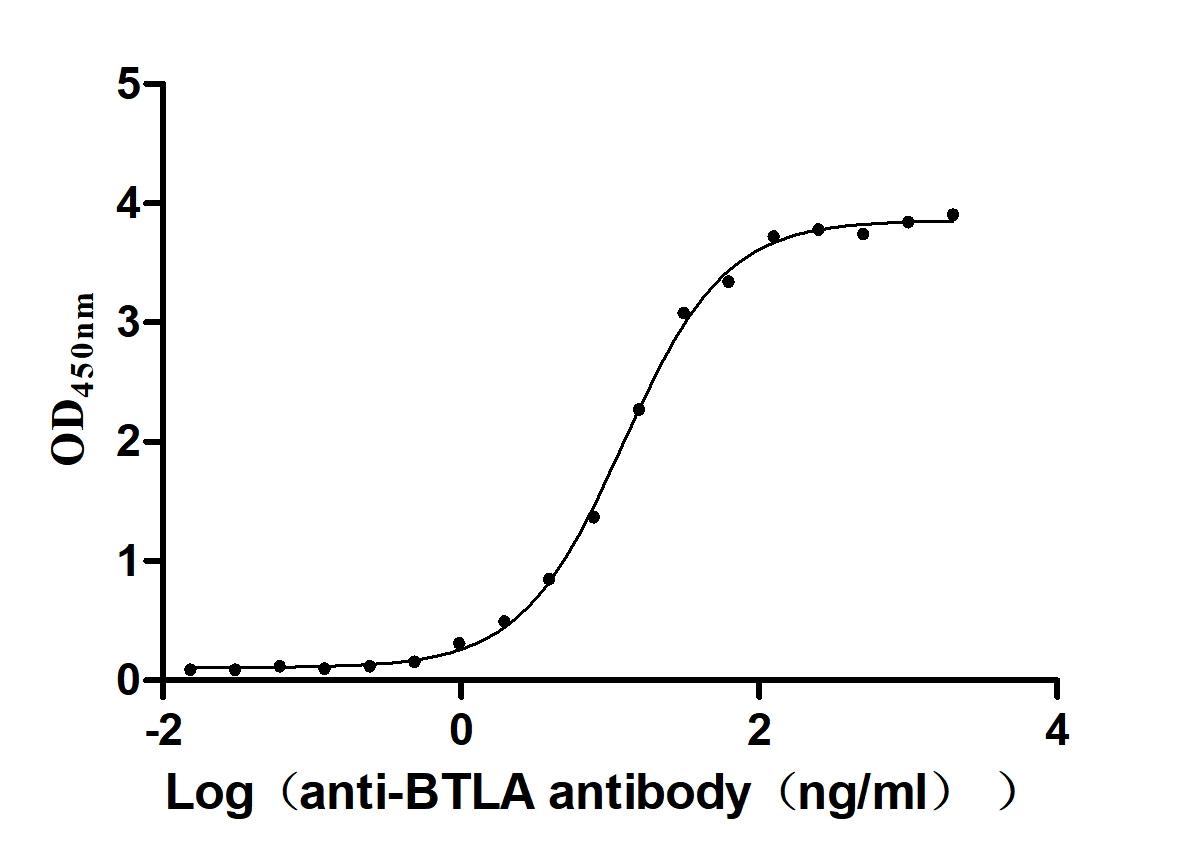Recombinant Human Negative elongation factor C/D (TH1L)
-
货号:CSB-YP815573HU
-
规格:
-
来源:Yeast
-
其他:
-
货号:CSB-EP815573HU
-
规格:
-
来源:E.coli
-
其他:
-
货号:CSB-EP815573HU-B
-
规格:
-
来源:E.coli
-
共轭:Avi-tag Biotinylated
E. coli biotin ligase (BirA) is highly specific in covalently attaching biotin to the 15 amino acid AviTag peptide. This recombinant protein was biotinylated in vivo by AviTag-BirA technology, which method is BriA catalyzes amide linkage between the biotin and the specific lysine of the AviTag.
-
其他:
-
货号:CSB-BP815573HU
-
规格:
-
来源:Baculovirus
-
其他:
-
货号:CSB-MP815573HU
-
规格:
-
来源:Mammalian cell
-
其他:
产品详情
-
纯度:>85% (SDS-PAGE)
-
基因名:
-
Uniprot No.:
-
别名:HSPC130; Negative elongation factor C/D; NELF C; NELF D; NELF-C/D; NELFC; NELFD; NELFD_HUMAN; TH1; TH1-like protein; TH1L
-
种属:Homo sapiens (Human)
-
蛋白长度:full length protein
-
表达区域:1-590
-
氨基酸序列MAGAVPGAIM DEDYYGSAAE WGDEADGGQQ EDDSGEGEDD AEVQQECLHK FSTRDYIMEP SIFNTLKRYF QAGGSPENVI QLLSENYTAV AQTVNLLAEW LIQTGVEPVQ VQETVENHLK SLLIKHFDPR KADSIFTEEG ETPAWLEQMI AHTTWRDLFY KLAEAHPDCL MLNFTVKLIS DAGYQGEITS VSTACQQLEV FSRVLRTSLA TILDGGEENL EKNLPEFAKM VCHGEHTYLF AQAMMSVLAQ EEQGGSAVRR IAQEVQRFAQ EKGHDASQIT LALGTAASYP RACQALGAML SKGALNPADI TVLFKMFTSM DPPPVELIRV PAFLDLFMQS LFKPGARINQ DHKHKYIHIL AYAASVVETW KKNKRVSINK DELKSTSKAV ETVHNLCCNE NKGASELVAE LSTLYQCIRF PVVAMGVLKW VDWTVSEPRY FQLQTDHTPV HLALLDEIST CHQLLHPQVL QLLVKLFETE HSQLDVMEQL ELKKTLLDRM VHLLSRGYVL PVVSYIRKCL EKLDTDISLI RYFVTEVLDV IAPPYTSDFV QLFLPILEND SIAGTIKTEG EHDPVTEFIA HCKSNFIMVN
-
蛋白标签:Tag type will be determined during the manufacturing process.
The tag type will be determined during production process. If you have specified tag type, please tell us and we will develop the specified tag preferentially. -
产品提供形式:Lyophilized powder
Note: We will preferentially ship the format that we have in stock, however, if you have any special requirement for the format, please remark your requirement when placing the order, we will prepare according to your demand. -
复溶:We recommend that this vial be briefly centrifuged prior to opening to bring the contents to the bottom. Please reconstitute protein in deionized sterile water to a concentration of 0.1-1.0 mg/mL.We recommend to add 5-50% of glycerol (final concentration) and aliquot for long-term storage at -20℃/-80℃. Our default final concentration of glycerol is 50%. Customers could use it as reference.
-
储存条件:Store at -20°C/-80°C upon receipt, aliquoting is necessary for mutiple use. Avoid repeated freeze-thaw cycles.
-
保质期:The shelf life is related to many factors, storage state, buffer ingredients, storage temperature and the stability of the protein itself.
Generally, the shelf life of liquid form is 6 months at -20°C/-80°C. The shelf life of lyophilized form is 12 months at -20°C/-80°C. -
货期:Delivery time may differ from different purchasing way or location, please kindly consult your local distributors for specific delivery time.Note: All of our proteins are default shipped with normal blue ice packs, if you request to ship with dry ice, please communicate with us in advance and extra fees will be charged.
-
注意事项:Repeated freezing and thawing is not recommended. Store working aliquots at 4°C for up to one week.
-
Datasheet :Please contact us to get it.
相关产品
靶点详情
-
功能:Essential component of the NELF complex, a complex that negatively regulates the elongation of transcription by RNA polymerase II. The NELF complex, which acts via an association with the DSIF complex and causes transcriptional pausing, is counteracted by the P-TEFb kinase complex.; (Microbial infection) The NELF complex is involved in HIV-1 latency possibly involving recruitment of PCF11 to paused RNA polymerase II.
-
基因功能参考文献:
- Trihydrophobin 1 phosphorylation by c-Src regulates MAPK/ERK signaling and cell migration. PMID: 22238675
- TH1 might play an important role in regulation of proliferation and invasion in human breast cancer. PMID: 20735431
- These results indicate that TH1 is a novel regulator to control the duration and magnitude of androgen signal transduction and might be directly involved in androgen-related developmental, physiological, and pathological processes. PMID: 20069563
- diverse transcriptional consequence of NELF-mediated RNAPII pausing in the human genome PMID: 20028984
- In a two-hybrid screen of human fetal liver cDNA library, TH1 was detected as a new interaction partner of A-Raf; this specific interaction may have played a critical role in the activation of A-Raf. PMID: 11952167
- Trihydrophobin 1 negatively regulates A-Raf kinase PMID: 14684750
- A study was done of ubiquitin-dependent proeolysis of TH1L protein by E6-AP. PMID: 17131388
- Maternal serum Th1 cytokines concentrations increase in preterm and term delivery. PMID: 17621989
- TH1 interacts with PAK1 and specifically restricts the activation of MAPK modules through the upstream region of the MAPK pathway, thereby influencing cell migration. PMID: 19136554
显示更多
收起更多
-
亚细胞定位:Nucleus.
-
蛋白家族:NELF-D family
-
组织特异性:Widely expressed. Expressed in heart, brain, lung, placenta, liver, skeletal and cardiac muscle, adrenal, thyroid, kidney and pancreas.
-
数据库链接:
HGNC: 15934
OMIM: 605297
KEGG: hsa:51497
STRING: 9606.ENSP00000342300
UniGene: Hs.517148
Most popular with customers
-
Recombinant Human 5'-nucleotidase (NT5E) (Active)
Express system: Mammalian cell
Species: Homo sapiens (Human)
-
Recombinant Rabbit Tissue factor pathway inhibitor (TFPI) (Active)
Express system: Mammalian cell
Species: Oryctolagus cuniculus (Rabbit)
-
Recombinant Human C-X-C chemokine receptor type 4 (CXCR4)-VLPs (Active)
Express system: Mammalian cell
Species: Homo sapiens (Human)
-
Recombinant Mouse Retinol-binding protein 4 (Rbp4) (Active)
Express system: Mammalian cell
Species: Mus musculus (Mouse)
-
Express system: Mammalian cell
Species: Homo sapiens (Human)
-
Express system: Mammalian cell
Species: Homo sapiens (Human)
-
Recombinant Human Cytotoxic and regulatory T-cell molecule (CRTAM), partial (Active)
Express system: Mammalian cell
Species: Homo sapiens (Human)
-
Recombinant Human B- and T-lymphocyte attenuator(BTLA), partial (Active)
Express system: Mammalian cell
Species: Homo sapiens (Human)




-AC1.jpg)















